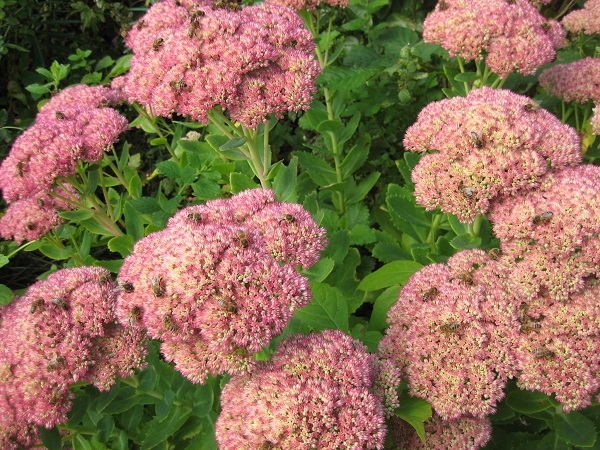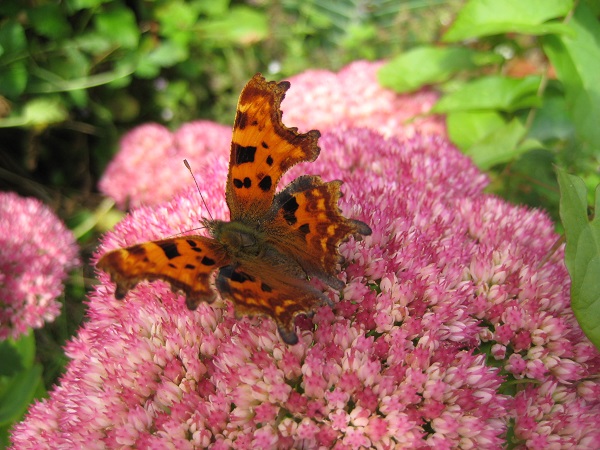
Have you ever wondered why some plants in your garden seem to be preferred by bees? For example Nepeta, Thymus, Lavandula, Cerinthe, Echium, Sedum and Phacelia.
In researching ‘nectar flow’ in flowers I came across several interesting articles which explain some of the complexities relating to this (links below). Here are some snippets to whet your interest:
Nectar flow refers to the rate at which nectar is secreted by the flower; some flower species produce nectar much more quickly than others.
The concentration of sugar in nectar in temperate flowers is usually 20–50%, rising to 70% (% sucrose) in some conditions.
Different insects (and bats) prefer or even require particular concentrations of nectar, for example bats have been said to prefer 17%, hummingbirds 21%, hawkmoths 27%, and bees 46%. These are generalizations but they reflect that creatures with longer tongues cannot drink more concentrated nectars. Therefore long-tongued hummingbirds, bats, and butterflies must seek dilute sources, often 15–20%; whereas flies, mostly with quite short, lapping proboscis can take nectar concentrations up to 70%.
Nectar preferences are mainly due to the ratio of calorific reward and nectar viscosity. Nectar viscosity rises exponentially with concentration (so that a 60% solution is 28 times as viscous as a 20% solution). Therefore a very concentrated nectar becomes extremely thick and sticky, and cannot travel fast enough (or at all) up the long hollow tongue of many bees to give an adequate rate of gain of food.
A bee can make only short individual flower visits if hovering, so may need quicker uptake than another bee that is foraging by crawling over the flowers.
Nectar tends to dry out, especially on hot days, gradually becoming more concentrated and more viscous.
Nectar in open cup-shaped flowers (e.g. daisies) dries out fairly rapidly on hot days becoming viscously concentrated or even crystalline rendering it useless to long-tongued bees. Nectar in an enclosed / elongated flower tends not to dry out due to the micro-climate within the flower and is usually more attractive to bumble bees throughout the day. Hairs within elongated flowers (e.g foxgloves) helps protect the nectar from drying out. It follows that flower shape is influenced (has evolved) by the climate from where that plant comes form in the world
Nectar production is related to relative humidity in the atmosphere more than temperature and wind.
Spring nectar (for example from apple trees) tends to be relatively dilute and therefore not of great value in honey production yet of course still vital to the survival of bees.

Such an interesting subject !
References and further reading:
https://www.sciencedirect.com/topics/agricultural-and-biological-sciences/nectar
https://www.sciencedirect.com/topics/earth-and-planetary-sciences/nectar
https://www.sciencedirect.com/topics/agricultural-and-biological-sciences/nectar-plants
https://www.sciencedirect.com/topics/earth-and-planetary-sciences/nectar